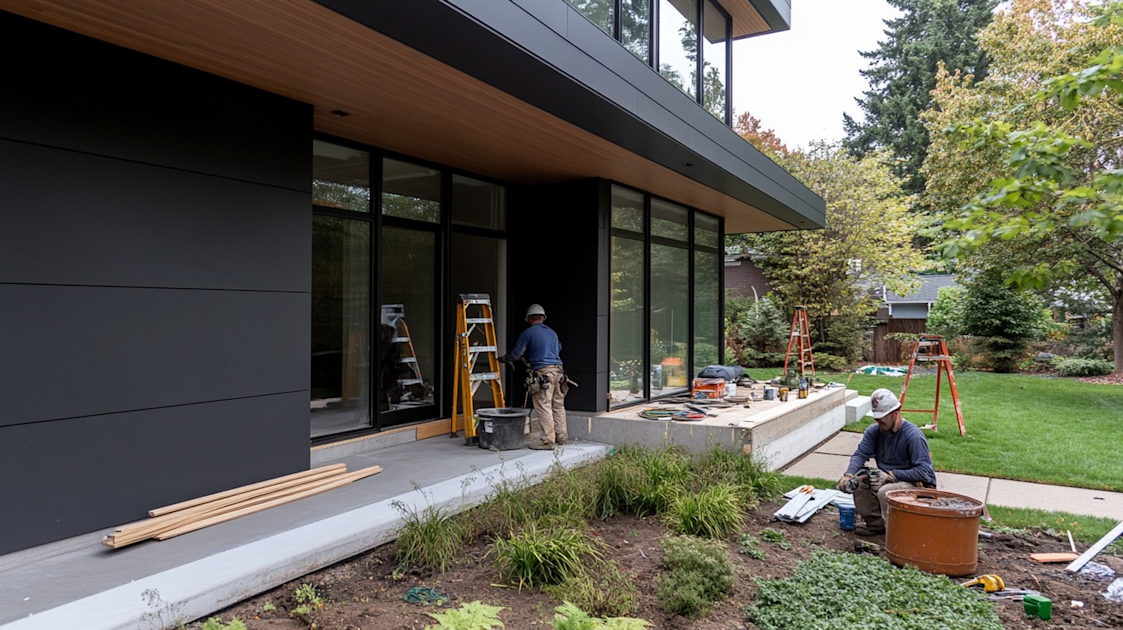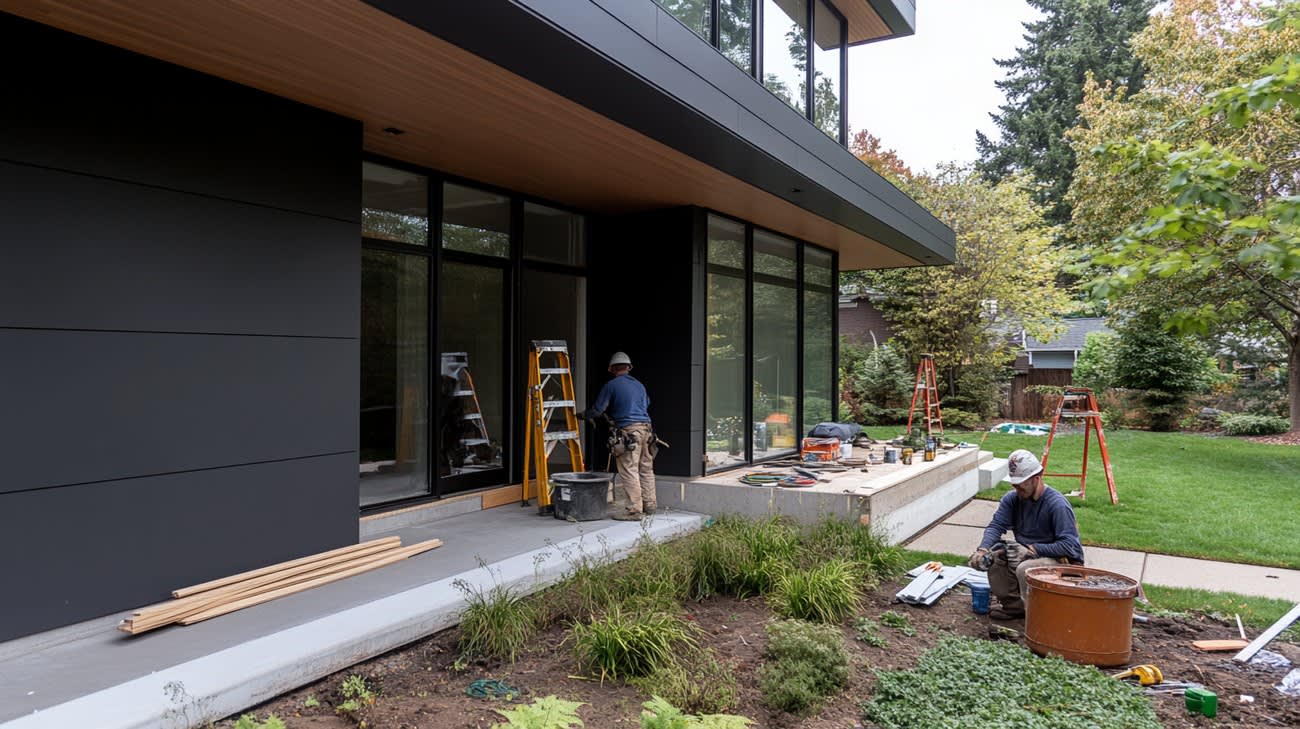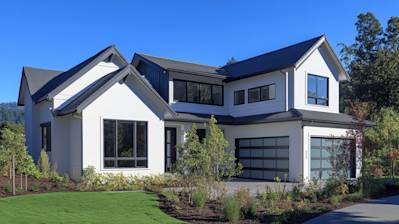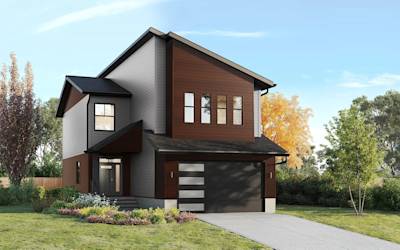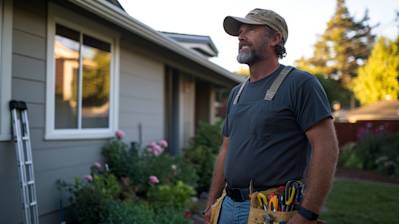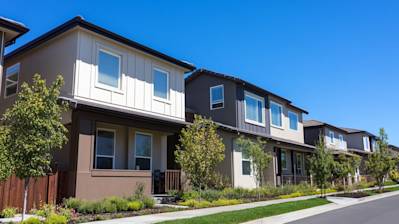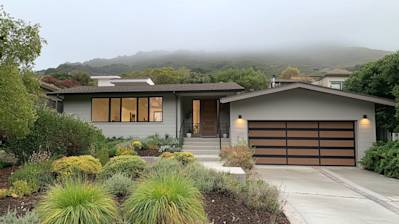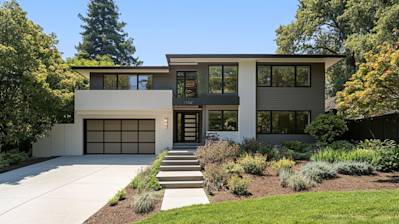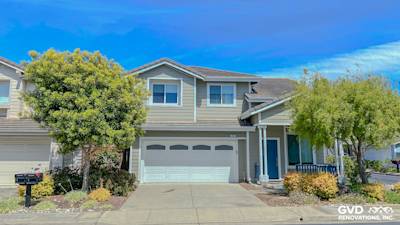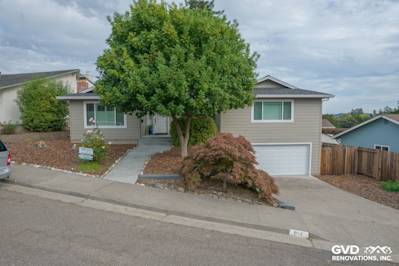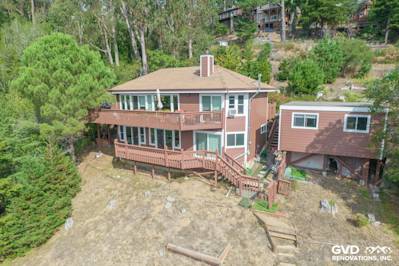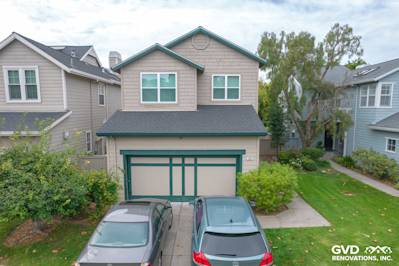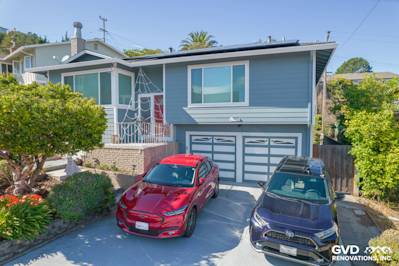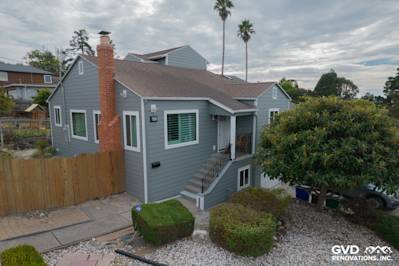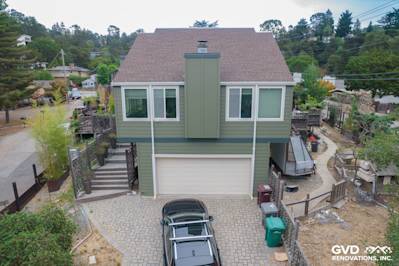If improving the overall durability and aesthetics of your home is your goal, investing in high-quality siding is your best bet. Among all types of siding available, Hardie siding — also known as HardiePlank or Hardie board — is considered a top choice for homeowners. Known for its rugged durability and range of aesthetics, it's an ideal investment for any homeowner seeking to improve the longevity and value of their home. This blog post will guide you step-by-step through the process of installing Hardie siding.
What Is Hardie Siding?
Before discussing installation, it's critical to understand what Hardie siding is. Hardie siding is a form of fiber-cement siding crafted by James Hardie Building Products. It's crafted from cement, sand, and cellulose fibers to create a product that's highly durable, weather-resistant and comes in a wide array of styles and colors.
Tools and Materials Needed for Installing Hardie Siding
To install Hardie siding, you'll need robust tools on hand. Here's a list of the ones you'll likely need:
- HardiePlank or Hardie board siding
- Safety goggles and gloves
- Measuring tape
- Circular saw equipped with a diamond blade
- Hammer and nails
- Pry bar
- Shears for fiber-cement siding
- Caulk and caulking gun
How to Install Hardie Siding? An Easy Step-by-Step Guide
Let's dive right into it. Here's a comprehensive guide on installing Hardie siding.
Step 1: Preparing the Wall Surface
Start by removing existing siding or claddings. The wall surface needs to be flat and devoid of any obstructions.
Step 2: Install the Weather Barrier
Install a climate-resistant barrier in agreement with local building codes. It will add an extra layer of protection against the elements.
Step 3: Begin Installing Trim
Begin your Hardie siding installation by installing the trim. The best choice is HardieTrim boards. Make sure they're level and secure.
Step 4: Time to Start with the Siding
Cut the Hardie board siding to size using your circular saw. Start attaching your first piece at the lowest point of the structure. Make sure it's level!
Step 5: Overlap the HardiePlank
HardiePlank must overlap by at least 1.25" for proper weatherproofing. Do this for each subsequent plank. Double-check to ensure the siding planks are level periodically.
Step 6: Caulking and Painting
Once you've installed all planks, caulk as needed and prime any cuts. Finally, apply the required coats of paint.
Key Tips for a Successful Hardie Siding Installation
To ensure your Hardie siding installation runs smoothly, keep some handy tips in mind.
Adhere to Safety Measures: Always adhere to safety guidelines. Hardie siding installation involves sharp tools and heavy materials. Ensure you're using safety goggles, gloves, and closed shoes throughout the process.
Take Proper Measurements: Always measure twice, cut once. Missteps in measurements may lead to waste of resources.
Follow Manufacturer Guidelines: The James Hardie company provides detailed installation guidelines. Always refer to these when installing Hardie siding to make sure you get the best possible result.
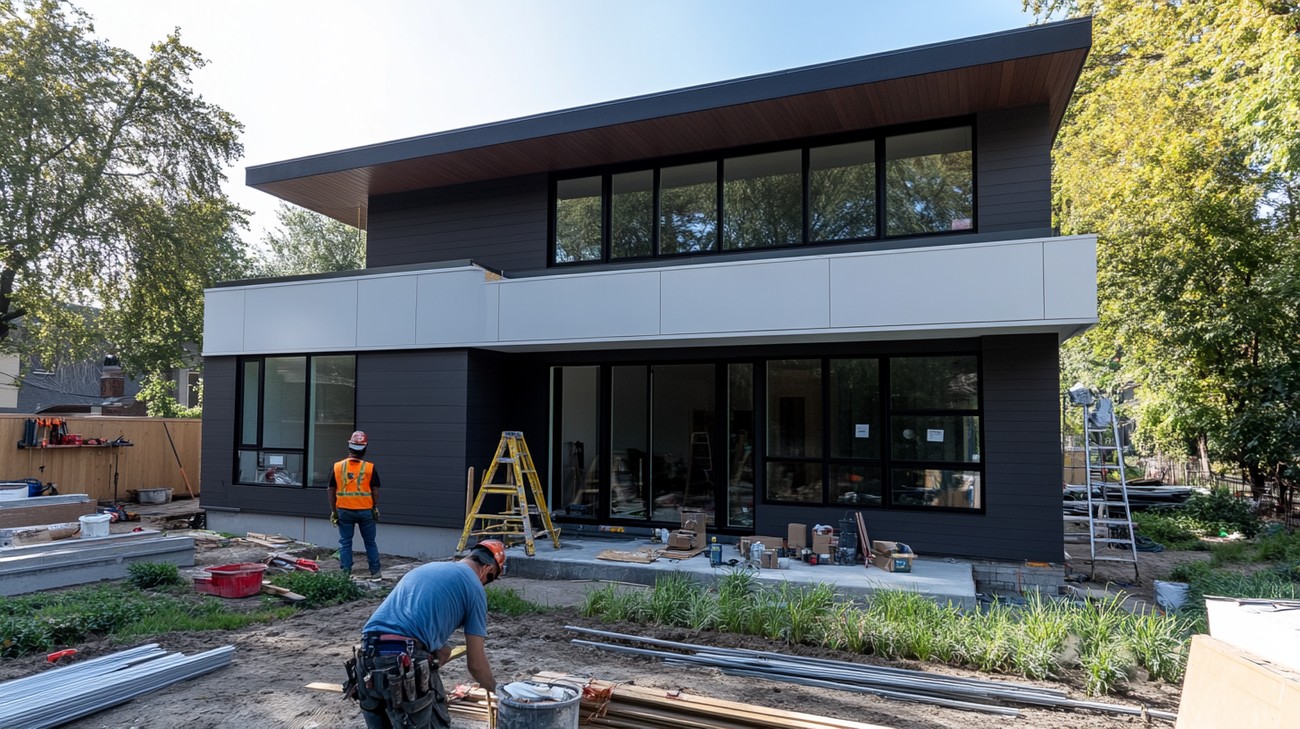
Frequently Asked Questions about Installing Hardie Siding
Why Should I Choose Hardie Siding Over Other Types?
Hardie siding is extremely durable and resistant to common issues that plague other siding materials, such as warping, rotting, or damage from weather conditions. It's fire-resistant and it doesn't attract pests like termites, either. Above all, Hardie siding provides an aesthetic curb appeal that stands out among traditional sidings.
How Much Does It Cost to Install Hardie Siding?
The cost to install Hardie siding can vary based on several factors, including the size of your home, the specific product you choose, and your location. On average, homeowners may spend anywhere within a range of $40,000 to $80,000 for a professional installation. It’s advisable to get at least three estimates from different contractors to ensure you're getting a fair price.
How Long Does Hardie Siding Installation Take?
The timeframe for installation depends on the size of your home and the team carrying out the installation. Generally speaking, for an average-sized house, the installation of Hardie siding can be completed in about one to two weeks.
Can I Install Hardie Siding Myself?
While it's possible to install Hardie siding yourself, it is not generally recommended unless you have significant experience in home projects of a similar nature. Installing Hardie siding involves specific tools and techniques to properly secure and seal the siding. Mistakes in installation can affect the performance and durability of the siding. Moreover, self-installation may void your warranty.
What Maintenance is Required for Hardie Siding?
Hardie siding is known for its low maintenance requirements. Apart from a periodic cleaning with a low-pressure hose and a soft brush, there's not much else required to keep Hardie siding looking good. Repainting will depend on the product; some Hardie siding comes pre-coated with ColorPlus® Technology and comes with a 15-year paint warranty.
Is Hardie Siding Environmentally Friendly?
Yes, Hardie siding is made of sustainable and recyclable materials - primarily cement, sand, and wood fiber. This makes it a great choice for homeowners who are conscious of their environmental impact. It also lasts longer than most siding materials reducing waste in long term.
Does Installing Hardie Siding Increase Home Value?
Yes, installing Hardie siding can increase your home's value. Not only because it improves the curb appeal, but also because of its durability and low maintenance. Potential buyers see this as an investment that can save them time and money in the long run.
Does Hardie Siding Have Warranty?
Yes, most Hardie siding products come with a 30-year non-prorated, transferable, limited warranty. This serves as a testament to the quality and durability of Hardie siding.

Pros of Installing Hardie Siding
Durability
Longevity and Resistance
One of the major pros of installing Hardie siding (also known as Hardie board siding) is its durability. This type of siding is made from fiber cement, a strong and durable material that can stand up to a variety of weather conditions, including rain, snow, wind, and sun exposure. It's resistant to cracking, rotting, and warping, making it an excellent long-term investment for the exterior of your home.
Resistance to Pests and Fire
Furthermore, Hardie siding is resistant to pests such as termites and can also resist fire better than traditional wood or vinyl siding. This adds an additional level of security for your home.
Appearance
Customizable Aesthetics
Hardie siding comes in a variety of styles and colors, making it easy to match the aesthetic of your home. You can select from traditional lap siding, vertical board, and batten style, or even a shingle-style siding. There are also several different finishes available, from smooth to textured, allowing for complete customization.
Paint Retention
Unlike other types of siding, Hardie board holds paint remarkably well. This means your chosen color will stay vibrant and fresh-looking for longer durations. It typically requires repainting far less frequently than wood siding, making it a low-maintenance choice for homeowners.
Environmentally Friendly
Hardie siding is considered a 'green' building material. It's made from sustainable and recyclable materials like cement, sand, and wood pulp. Plus, since it lasts so long, it needs to be replaced less frequently, which is advantageous from an environmental standpoint.
Cons of Installing Hardie Siding
Installation
Complexity of Installation
Hardie siding is more complex to install than other types of siding like vinyl or aluminum. This is largely due to its weight. Being a heavy material, it requires more manpower to install and can make the installation process longer and potentially more costly as a result.
Need for Professional Installation
Because the installation process is complicated and precise, it is generally recommended to hire a professional contractor for Hardie siding installation. DIY installation could result in improper fitting, which could jeopardize the siding's effectiveness and longevity.
Cost
Initial Expense
The initial cost of Hardie siding can be notably higher than other siding options such as vinyl or wood. The materials themselves are more expensive, and, as mentioned above, installation is more involved and typically requires professional contractors.
Maintenance Expenses
While Hardie siding generally requires less frequent painting than other materials, when it does need to be repainted, the process can be labor-intensive and costly. Even though it ultimately might save on maintenance costs in the long run due to its durability and longevity, these upfront and eventual repainting costs could be a drawback for some homeowners.
Weight
Implications on Structural Integrity
Because of its fiber cement construction, Hardie siding is quite heavy. This might impose limitations on certain houses that are not structurally prepared to handle the added weight. Therefore, appropriate structural evaluation is necessary before choosing Hardie siding.
As you can see, there are several pros and cons to consider when deciding whether to install Hardie siding on your home. While it's durable, customizable, and environmentally friendly, it's also more difficult and costly to install, requires professional installation, and has significant weight that can impact your home's structural elements. Thus, it's crucial to evaluate your specific needs, budget, and home conditions before making a decision.

Myths and Misconceptions About Installing Hardie Siding
Hardie siding, also known as fiber-cement siding, is a durable product designed to withstand harsh weather conditions and provide attractive, long-term protection for homes. Despite its popularity, there are numerous myths and misconceptions regarding its installation process and overall benefits. In this section, we will delve into deeper details about these misconceptions and provide the actual facts.
Myth 1: Hardie Siding is Difficult to Install
Misconception: You need professional skills to install Hardie siding
Many people are of the belief that installing Hardie siding is a complicated process requiring professional experience. This leads to much apprehension about DIY installation.
Fact
While it’s true that installing Hardie siding requires a certain level of skill, it’s not impossible for a DIY enthusiast with appropriate knowledge to handle the job. The manufacturer provides detailed installation guides, which should be followed correctly and accurately.
Myth 2: Hardie Siding is Too Expensive
Misconception: The cost of Hardie siding is prohibitive
A significant portion of homeowners believe that Hardie siding is too expensive compared to traditional vinyl siding or wood.
Fact
While the upfront cost of Hardie siding may be higher than other types of siding, it has an excellent long-term investment value. Hardie siding is extremely durable, requires less maintenance, and holds up well against weather elements, which can save homeowners repair or replacement costs in the long run.
Myth 3: Hardie siding is not environmentally friendly
Misconception: The manufacturing process of Hardie siding is harmful to the environment
This common misconception arises from the misunderstanding of the materials used and the manufacturing process of Hardie siding.
Fact
Hardie siding is made of fiber cement which is composed of cellulose fibers, cement, and sand - materials known to have minimal impact on the environment. Moreover, the company behind Hardie siding, James Hardie, is committed to sustainability and aims to optimize energy usage and reduce waste in their manufacturing process.
Myth 4: Hardie Siding doesn’t need a sealant or paint
Misconception: Hardie siding is ready to be installed as is
Some people assume that Hardie siding doesn’t require any sealant or paint before or after installation.
Fact
Hardie siding does come pre-primed, ready for paint. However, to ensure its longevity and maintain its warranty, it is necessary to paint Hardie siding with 100% acrylic paint after the installation process.
Myth 5: All Fiber Cement Siding is Same as Hardie Siding
Misconception: All products labeled as fiber cement siding offer the same benefits as Hardie siding.
There's a common myth that all sidings made from fiber cement mirror the benefits of Hardie siding in terms of durability, longevity, and appearance.
Fact
While Hardie siding is indeed made from fiber cement, not all fiber cement sidings are the same. James Hardie’s products are famous for their quality and durability due to their patented manufacturing process and quality control. Thus, while other products may share similar materials, they may not offer the same level of quality and protection as Hardie siding.
By understanding the facts against these myths and misconceptions, homeowners can make informed decisions about installing Hardie siding and embarking on this home improvement process.
Summary
Installing Hardie siding is an excellent choice for homeowners seeking a superior and durable home exterior. It's often admired for its ability to withstand weather elements, insect infestation and doesn't rot or warp easily. Furthermore, it significantly enhances the aesthetic appeal of your home, making it a well-rounded choice for homeowners who prioritize both function and aesthetics.
Whether you want a home exterior that exudes elegance or a practical solution to withstand harsh weather, installing Hardie siding might just be the solution. The siding comes in various designs, allowing homeowners to choose a style that suits their personal preferences. Moreover, though the initial cost may be higher than some alternatives, the prolonged life-span and reduced maintenance definitely offset that cost in the long run.
Installing Hardie siding does demand expertise and precision, so you might want to hire professionals to ensure it's done correctly. Remember, the longevity of your siding highly depends on proper installation. Properly installed, Hardie siding can serve you efficiently for years while enhancing your home's look and value. So when you're ready to upgrade your home's exterior, Hardie siding is a strong contender to consider.
About Bay Area Siding Company
Founded in sunny Bay Area, CA, Bay Area Siding Company has solidified its reputation as a dependable player in the home improvement industry. We're more than just another construction firm - we are a team of passionate professionals who believe in delivering top-notch services to our clients. Specializing in everything from vinyl siding to stucco, we make sure every Bay Area residence looks exceptional and provides a comfortable living environment. Our mission has always been to deliver high quality work that doesn't only meet, but surpasses customers' expectations. So, whether you're seeking a complete home makeover or just looking to spruce up your exterior, don't hesitate to reach out. We're ready to take your home aesthetics to new heights.

